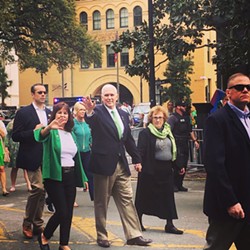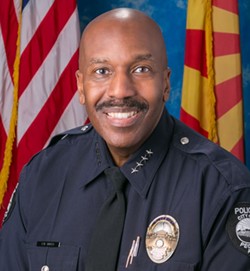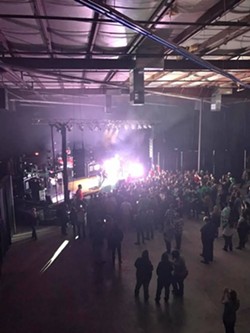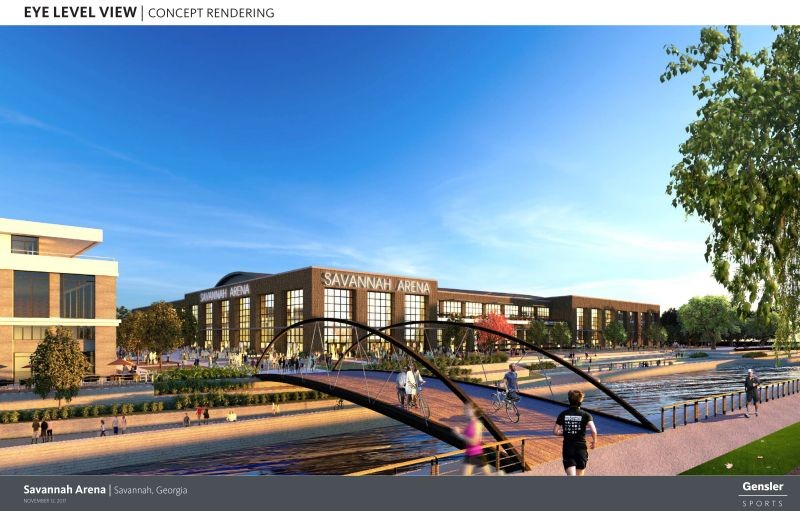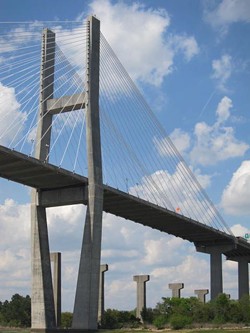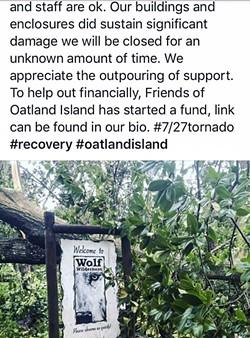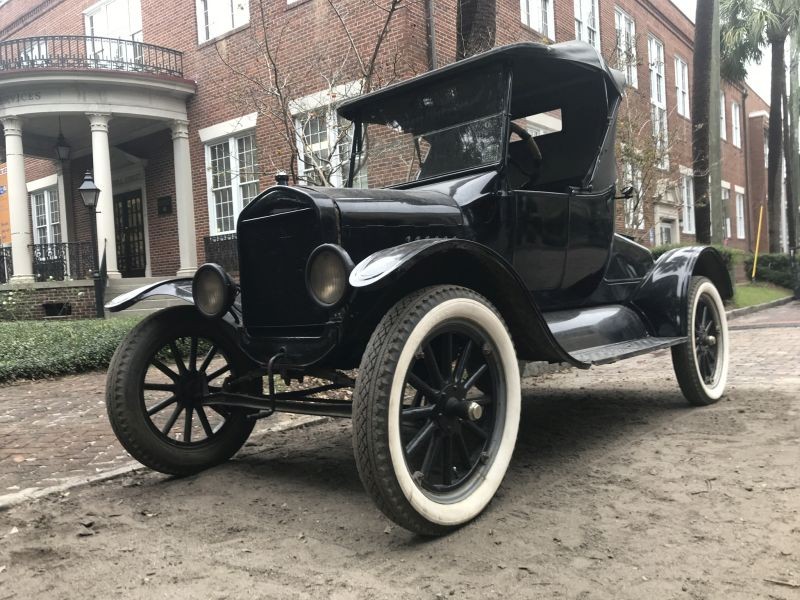1. Fire Fee Fiasco
In retrospect, the now-defunct Fire Fee was that rarest of unicorns: Something that united virtually all Savannahians.
Problem was, they were all united against it.
When envisioned late in 2017, it was a perhaps too-clever-by-half way of balancing the City budget. But by the end of the months-long, grueling controversy, which dragged on through half of 2018, the Fire Fee triggered a local taxpayer revolt.
The rollout of the measure was part of the reason for its failure. Because the City was running up against a budget deadline and rushing the Fire Fee into effect, the public found themselves constantly behind the curve in learning about it.
First it was supposed to cost a $258 flat fee per household — then commercial properties discovered that they’d be on the hook for thousands of dollars per year.
The public was told discounts were available — then found out the discounts were only good for a maximum of 20 percent.
The Fire Fee also ran afoul of a very politically powerful force in Savannah: The churches. When many large congregations got their estimated Fire Fee bills and discovered they were five figures, the Fire Fee was assumed to be on life support. Yet, Mayor DeLoach and a majority of Council still voted for it.
In the end, the Fire Fee probably died due to two poison pills.
First, it was a de facto regressive tax. Because Council passed it along with a property tax decrease, wealthier homeowners actually received a bonus after paying their Fire Fee.
Second, just as the Fire Fee was passed, City Manager Rob Hernandez announced there was a surprise $10 million surplus in the City budget. Though he was correct in pointing out that the surplus was not something we could depend on in the future, the political optics were catastrophic.
In the end, we can look back on the Fire Fee as one of the most poorly constructed and poorly marketed policy measures Savannah has seen in quite some time. – Jim Morekis
2. National Historic Landmark District Loses a Letter Grade
The downgrading of Savannah’s Landmark National Historic District by the National Park Service in 2018 laid bare the fault lines between City Council’s pro-development policies and the preservation community.
The controversy kicked off in the spring, when news got out of the recommendation by an NPS-commissioned study to lower Savannah’s official status to “Threatened.”
The change had not yet been made official by NPS — that would come in August, when they adopted the study’s recommendation.
But for a few months there was a good bit of political mudslinging between preservationists on one hand — saying “we tried to warn everybody” — and the City itself, which tried several strategies to downplay the news.
First, the City incorrectly said the Landmark District was already in “Threatened”status (it wasn’t).
Then, the local tourism industry pushed back hard on the study, poking holes in its methodology.
Most ludicrously, City Manager Rob Hernandez wrote an op-ed for the daily paper in which he inaccurately claimed that the National Park Service disavowed its own commissioned study — whose recommendation it would go on to adopt.
While it is certainly true that the difference between “Satisfactory” and “Threatened” status can come down to literally just a building or two, the NPS study specifically sited — among many other things — the presence of new hotel development outside preservation guidelines as a contributing factor.
Hotel development has long been a sore point for those who feel downtown Savannah has been sold out, but the National Park Service made their suspicions a reality. – Jim Morekis
3. Paddy’s Day in the Pence Zone
St. Patrick’s Day is sort of Savannah’s thing.
Attendance for 2018’s festival was around 500,000, with people from far and wide coming to experience the booze-filled party.
But this year, one attendee got all the attention: Vice President Mike Pence.
Pence is proudly Irish, with a grandfather who emigrated to the U.S. from Ireland in 1923.
Pence is also notoriously anti-LGBT and has worked throughout his political career to disenfranchise LGBT people, from signing the Religious Freedom Restoration Act into law to supporting gay conversion therapy.
Pence is also a conservative Christian and not a drinker, so his desire to attend a rowdy, boozy party was already a bit confusing.
Regardless of politics, Pence’s presence at the festival turned out to be a logistical challenge – or nightmare, depending on your experience. The Secret Service manned an “Enhanced Security Zone” of a dozen square blocks through the heart of downtown. The only entry into the zone was through one of four security checkpoints, and inside were restrictions similar to TSA protocol: no coolers, no outside food or drink, no backpacks.
Originally, signs were not allowed in the Pence Zone, but the city changed their minds on that pretty quickly after a lawsuit was filed on First Amendment grounds.
The result was that, in nearly every photograph taken during Pence’s visit, the VP is flanked by rainbow flags and pro-LGBT signs. The images sent a strong message of Savannah’s tolerance and inclusion on its biggest day.– Rachael Flora
4. Homicides Down & New Top Cop
As bad as the Fire Fee and other controversial measures went for local leaders, it is also incontrovertible that the main campaign platform item of Mayor Eddie DeLoach and new Council members elected in 2015 is largely fulfilled.
The homicide rate in 2018 is now under 30 in the former City/County police jurisdiction, down from an incredible 42 at the end of 2016, and down from a stunning 53 in 2015.
That’s an impressive improvement in the homicide numbers, and while certainly there’s a long way to go, the trendline seems most encouraging.
Particularly shocking, however, was the murder of beloved community activist Shawntray “Puff,” Grant, killed June 15 at The View on Oglethorpe public housing. His family recently announced a lawsuit against the The View and the City of Savannah.
Former Savannah Police Chief Joseph Lumpkin announced his resignation in late 2017, and a long candidate search resulted in a new Chief, Roy Minter – now called “Director of Public Safety” in the Hernandez era of City management.
Minter officially takes the oath of office Dec. 28, 2018. – Jim Morekis
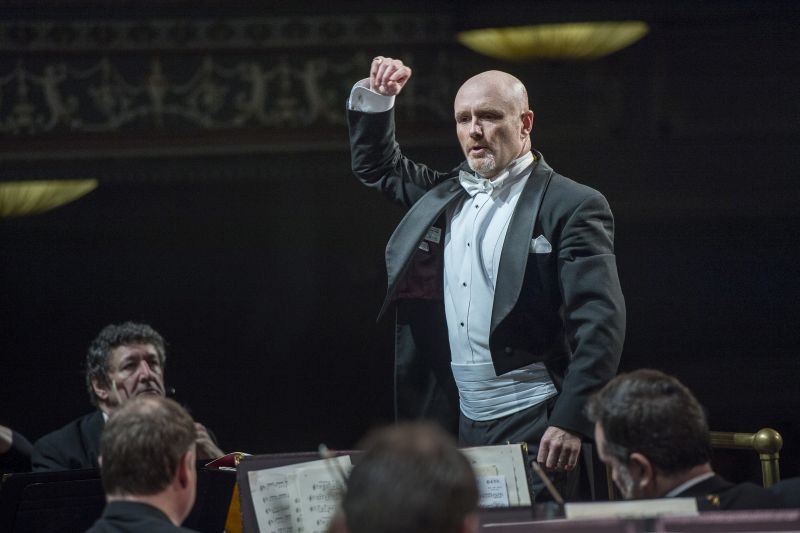
5. Ch-ch-ch-ch-changes at Music Festival, Philharmonic, and Telfair
Predictable David Bowie reference aside, it’s been a pretty unpredictable time in Savannah. Much of that unpredictability has to do with changes at the top for many local favorites - including Savannah Music Festival, the Savannah Philharmonic Orchestra, and Telfair Museums. Those long-running institutions all announced shakeups this year, with Savannah Music Festival announcing a new Executive Director in August.
David Pratt joined the festival after the resignation of longtime Executive and Artistic Director Rob Gibson. Pratt came aboard the SMF Executive Committee and Board of Directors after leaving his position with the Queensland Symphony Orchestra in Australia.
To fulfill the artistic side of Gibson’s position, SMF’s Marketing & Managing director Ryan McMaken took over the role of Artistic Director in conjunction with the addition of Pratt.
Things changed big time at the Telfair in May, when CEO and Director Lisa Grove announced she’d be leaving to join the Obama Presidential Library in Chicago.
“It has been a great privilege working alongside the Board and staff of Telfair Museums for the past six and a half years, and I am incredibly proud to have led the organization to record heights of financial stability and programmatic excellence,” Grove said. The longtime executive, who joined in 2012, “raised record amounts of funding during her tenure, producing six consecutive years of operating surpluses while increasing the overall budget by 25%,” according to a spokesperson.
Over at the Savannah Philharmonic, Artistic Director and conductor Peter Shannon stunned the community when it was announced that he’d be leaving the orchestra at the end of the current 10th season. Shannon has been with the Philharmonic since the very beginning, and has been significantly responsible for the success and growth they’ve experienced since inception.
“The people of this city have shown me and my family so much love and support, and have empowered me to cultivate a passionate and talented group of musicians from all over the country; bringing them together as Savannah’s orchestra with a sound and character all of its own,” Shannon said in a statement.
“Ten years is a significant milestone for an orchestra’s artistic leadership, and I feel like now is the time to turn my focus to new artistic pursuits, both in the US and in Europe.” – Sean Kelly
6. Stage on Bay Ghosts the Party
In one of the strangest and most dramatic stories to come out of the arts community in Savannah in quite some time, the Stage on Bay disappeared almost as quickly as it appeared. The venue seemed ill-fated from the start, after its life began with serious liquor license issues.
Due to its location and the assumed audience it would be attracting, the City Council was mostly dead-set against the venue being given a license – despite owner Charlie Schmitt complying with every legal requirement to obtain one.
The venue was in the Hudson Hill neighborhood, near the future taxpayer-funded Savannah Arena. That venue will seemingly attract the same kind of crowd that the City Council assumed would be detrimental to the viability of Stage on Bay.
A lawsuit followed, ultimately allowing the venue to open its doors. Things went well enough for a while, with some higher-profile headliners. Let’s be honest, though–the venue made plenty of questionable mistakes along the way, and they certainly contributed heavily to their own demise.
Many of the acts on the calendar were nostalgia bands and mid-level artists from the 80s and 90s, so the offerings weren’t always particularly exciting or attracting to the general population. At times, it felt as if the venue was the physical embodiment of a late 90s modern rock radio station. Don’t get me wrong – I’m a sucker for nostalgia as much as the next person. Drowning Pool and Hinder aren’t exactly the kind of headliners who are going to help cement the future of live music in Savannah, though.
Another flaw with Stage on Bay was its lackluster sound system and what some felt was a space that hadn’t been properly designed and treated for optimal sound.
By the end, things got pretty weird when the venue began cancelling shows left and right. By the time they ceased operations, shows were being dropped literally every day and ticket buyers experienced issues getting refunds.
Before the final nail was in the coffin, Schmitt and company were juggling their future by putting shows “off sale” and strategizing with artists’ agents about the best course of action.
The last-ditch efforts proved futile, however, and the Stage on Bay was no more. – Sean Kelly
7. Tragic Plane Crash
Major tragedy happened in May, when nine Air Guardsmen were killed in the crash of a Puerto Rico Air National Guard C-130 in Port Wentworth.
No one on the ground was injured when the aircraft crashed directly into Highway 21, which remained closed for a lengthy period of time following the incident.
Ironically, the WC-130-H, a hurricane hunter aircraft, was on its way to the “boneyard” at Arizona’s Davis-Monthan Air Force Base, but never completed what was to have been its final flight.
The Guardsmen were part of the PRANG’s 156th Airlift Wing, a sister unit to Savannah’s 165th Airlift Wing, which also flies C-130s.
A week later, a ceremony for the fallen airmen was held at Muñiz Air National Guard Base, Puerto Rico.
An official U.S. Air Force report on the tragedy was published in November detailing maintenance and morale issues within the wing, and detailing pilot error in the crash. – Jim Morekis
8. 420 in the 912
In March the City of Savannah joined the Georgia cities of Atlanta and Clarksville in removing criminal penalties for possession of marijuana under one ounce.
As of July 1 of this year, the offense is now a $150 ticket instead of arrest and jail time and lawyers and bail. (Probably, anyway; see below.)
Spearheaded by Alderman Van Johnson — and possibly a key development in any mayoral campaign he might mount in 2019 — the measure passed through City Council remarkably smoothly.
One might even say... kindly.
“We’re a historic city, we can act historically,” Johnson said. “We can be progressive. We can be ahead of the curve.”
Savannah’s decrim is unique in the state in that a portion of proceeds from the tickets will go to optional substance abuse treatment programs.
The 8-1 vote (Alderman Brian Foster was the lone dissenter) means that fans of the chronic in the City of Savannah — and only in city limits, folks, not on Wilmington Island or in Thunderbolt or on Tybee — can toke away knowing that they probably won’t end up getting years in prison.
FYI: Not to be a buzzkill, but smoking a joint does give officers probable cause to do more intrusive types of police work. Depending on what else you’re up to, that could result in much worse news for you than being out $150. — Jim Morekis
9. Arena Buyer’s Remorse?
The idea of a new arena for Savannah is far from just a 2018 story. It was first proposed several mayoral administrations ago, and voted on twice by the public.
But 2018 was the year the vision of an arena specifically on the City’s Westside took shape, and when the money spigots officially opened to various contractors for this massive project — often called the largest single public works project in Savannah’s history.
One of the first contracts, at $2.8 million, was for who would actually manage the construction.
Another contract — worth nearly $9 million — went to Atlanta-based Perkins + Will for the design of the Arena.
The big enchilada — and the one guaranteed to spark debate and controversy — is the so-called “Construction Manager at Risk” contract, which involves the vast bulk of the cost of actual materials and labor to build the brick and mortar facility at Gwinnett and Stiles.
That debate came to a head over this past summer, as our five-part series by Marcel R. Williams helped galvanize public concerns that the Arena was simply too expensive, and set to be built in arguably the least-conducive area possible.
Then, this past August the whole process was briefly halted by Alderwoman Estella Shabazz’s concerns that too much of the money would go to out-of-town worker and contractors, and wouldn’t adequately represent women and minority owned businesses.
When the bid was altered to address those concerns, another controversy happened when a $3.9 million “scrivener’s error” cast a shadow over the eventual bid-winner, AECOM Hunt.
While the Westside Arena does indeed seem to be a done deal, it will be built over the concerns of an increasingly skeptical public that has difficulty reconciling being told on one hand that the City is out of money, and on the other hand seeing so much money being spent on this ambitious new project. – Jim Morekis
10. A (Talmadge) Bridge Too Far
It seemed like 2018 would be the year when the Talmadge Bridge got its long-overdue name change.
Its namesake, Georgia Gov. Eugene Talmadge, was an outspoken white supremacist. A lot was accomplished in 2017 in regards to advocacy and awareness, particularly by Span the Gap, an activist group in favor of changing the name to something that wasn’t the name of a racist.
At the close of 2017, it seemed that the Savannah City Council was set to vote on renaming it the Savannah Bridge, particularly after Span the Gap’s Bridge Renaming Symposium in September. But this past January, after a significant push from the Girl Scouts, Ron Stephens introduced legislation for the bridge to be renamed the Juliette Gordon Low Bridge.
It’s worth noting here that Low did not allow black girls into the Girl Scouts until 1917, five years after she started the club, and even then she started a separate group for black girls. Her father-in-law, Andrew Low, was also a prolific slave owner.
Stephens chose to go with the Juliette Gordon Low moniker because he felt it was time to honor Georgia’s women, an admirable thought. However, the discord on that end would appear to have hindered the effort, since Stephens’ resolution was not passed by the Georgia General Assembly and the bridge kept its name.
In June, signage appeared downtown that directed drivers to the Savannah Bridge, not the Talmadge Bridge. It would appear that the Savannah Bridge won in the court of public opinion, since that’s what everyone calls it anyway.
The end to this saga could be more of a fizz than a bang, since the bridge might be replaced anyway. To keep up with the times, Savannah needs to improve its capacity a significant amount by 2028—like by 2.3 million TEUs, or twenty-foot equivalent units.
“The bridge is an impediment to growth,” said Griff Lynch, director of the Georgia Ports Authority. – Rachael Flora
11. Cultural Arts Center takes shape
This year, we finally got to see the Savannah Cultural Arts Center, a project in the works for over 15 years.
Clocking in at 39,000 square feet and costing over $24 million, the center was designed by Gunn Meyerhoff Shay and built by M.B. Kahn and Polote Construction. It will have two theatres—one with 464 seats, one with 100—five studio classrooms, and gallery spaces.
The center is replacing the S.P.A.C.E. Gallery and Black Box Theatre on Henry Street and is set to open in spring 2019.
The project is funded by SPLOST, or Special Purpose Local Option Sales Tax, meaning its funding was approved by voters. Still, residents have been concerned about the center for quite some time.
The contract was approved in 2013, but it took three more years for construction to actually begin, raising a few taxpayers’ eyebrows. The center’s design has also drawn criticism for being too modern in the middle of the historic district.
Many saw the center as an opportunity for Savannah to have a proper performance hall, but ultimately that won’t happen, according to design experts. The flex seating in the theatre has retractable seating, which could end up distorting the sound.
The city solicited suggestions for the name of the new center. In an admirable display of transparency, the city created a pie graph of the most popular suggestions, which included gems like “The Center Built on Theft,” “The Savannah Center for Bad Nonconforming Design,” “Wasted Tax Dollars,” “Do not disrespect the Jepson Center,” and “What is this building for?” They chose to stick with the original name. – Rachael Flora
12. The Village that Ate Starland
The rapidly-growing — some say rapidly gentrifying — Starland District was host to one of 2018’s longest-running controversies: the debate over Starland Village. The $40 million new apartment complex, with some portions set for five stories, generated both support and outcry.
Supporters say the residences and multi-use component will bring much-needed revitalization to the area, already a magnet for investment. Detractors say the developer, The Foram Group, is bringing too large, obtrusive, and modern a design to a neighborhood that is still primarily historic in nature.
At a contentious City Council meeting in March, many neighborhood residents spoke out against the project, to no avail – the zoning was approved.
While the Metropolitan Planning Commission in large part agreed that many aspects of Foram’s design were incompatible with the surrounding neighborhood, a majority of City Council nonetheless finally approved the project design in late summer.
A closer look into the process involved revealed what appeared to be a very favorable bidding process for the Foram Group, with emails showing the developer targeting an active police precinct to include in the project, and lobbying City Manager Rob Hernandez to declare the property surplus. Other documents indicate the City pulled the bid and re-issued it when Foram didn’t win on the first round.
In fairness, Starland Village is likely to end up being just one major project out of many being established in the same area. The only thing we know for sure is Starland will never be the same again, for better or for worse. – Jim Morekis
13. Parking Sticker Shock
While a favorite pastime in Savannah for decades has been complaining about parking meters, the truth is we had it pretty good. And as is often the case, we didn’t know how good until it was gone.
In a change that took effect the beginning of 2018, the City of Savannah decided to not only double parking rates from Liberty Street north, up to $2 an hour, but to dramatically extend the hours — now from 8 a.m.-8 p.m., Monday through Saturday.
To be fair, Savannah isn’t alone in this — on almost the same day, the city of Charleston, S.C., also hiked parking rates and hours. And anyone who’s tried to park in Atlanta knows how costly it is.
The City of Savannah went to great lengths to explain the controversial changes, which were just one part of a consultant-driven “Parking Matters” study.
In a nutshell, the study said there are fundamental “mismatches between parking supply and demand” with regards to the 12,000 paid spaces and 15,000 unregulated spaces in the Historic District, all in a confusing mish-mosh of rates and times.
While the most egregious hikes only took place north of Liberty, in a way that cemented public sentiment that it was a money grab, since the new rates took effect in the most tourist-heavy areas.
Meanwhile, locals complained that it is just another way the City has made our historic and altogether unique downtown less welcoming and accessible for people who actually live here and pay taxes.
Some good news did come out of it: As part of the Parking Matters changes, the formerly haphazard street sweeping schedule downtown was moved to just weeknights. And the new Park Savannah app is quite efficient and user-friendly. – Jim Morekis
14. Oatland Island Tornado
While we were thankfully spared from any major hurricane damage this year, a storm of a different kind caused heavy damage over on Whitemarsh Island.
The Oatland Island Wildlife Center suffered damage from a tornado in July and remained closed for much of the year, reopening just last week on Dec. 17. The director, Heather Merbs, said that the damage was more extensive and more devastating than what they suffered during Hurricane Matthew. Volunteers were even kept away for a while due to safety concerns.
The tornado also affected Marshpoint Elementary, nearly ripping the roof off the building.
Oatland Island has lots of animals in its care, both on the farm and inside the center. Fortunately, none of the animals were hurt during the tornado. Some animals did have to move to temporary enclosures, but for the most part, all animals were unharmed.
The admission fees have been waived until the official grand reopening on Jan. 12, 2019. Instead, the center just asks for donations in the interim. – Rachael Flora
15. School Board Goes Back to the Future
After a contentious and controversy-filled four years in office, School Board President Jolene Byrne announced in the spring that she would not seek reelection.
The announcement triggered a race to fill the seat that was as predictable in outcome as it was disappointing to those who desired the type of school reform Byrne pushed for in meeting after grueling meeting.
The heir apparent to Byrne’s crusading spirit was young Tye Whitely, who garnered great support among activists. But she didn’t make the eventual runoff between Joe Buck — who already served two terms in the office right before Byrne’s term – and Betty Morgan.
Buck’s overwhelming victory in the summer runoff showed one of two things, depending on your point of view: A return to a more stable, civil, and consensus-driven management style; or a return to a static and stale status quo for an already-moribund school system consistently ranked among the bottom in the state.
It does appear unlikely that we will see any repeats of the almost cartoonishly vicious School Board meetings, which could make the worst City Council meeting look like a croquet match.
Other school-related controversies in 2018 included an alarming false, “mistaken” referral to summer school for thousands of students (the school system offered the summer school spots anyway for families who had already planned on the false referrals).
Also, School Superintendent Ann Levett came under fire for insisting that she have a personalized parking spot next to every entrance for all the district’s nearly 60 schools. – Jim Morekis
16. Homelessness Issue Gains Awareness
A June letter in the daily paper from local State Rep. Jesse Petrea triggered an increased awareness of the issue of homelessness in Chatham County.
And 2018 ended with a triumphant dedication of a small community of Tiny Houses specifically intended for homeless veterans.
Petrea’s letter drew fire for its claim that tourists on the way to visit his district on Tybee Island would be shocked at seeing the homeless camp underneath the Truman Parkway at President Street.
Petrea’s “solution” to the problem was to enlist the aid of the state in removing the homeless camp. Where would they go instead? He didn’t say.
The outrage that the letter spawned did have a silver lining, however. In June, the Chatham-Savannah Authority for the Homeless hosted a community forum, with participation from a wide array of local groups and concerned citizens.
While practical steps largely remain elusive, the Tiny House unveiling a couple of weeks ago off Wheaton Street provided an up-close view of at least one pragmatic solution to one portion of Chatham County’s homelessness problem.
In the meantime, several homeless camps on the other side of town have been removed due in part to the City’s new investment in the Westside “Canal District” and its planned slate of upscale housing. – Jim Morekis
17. Food scene is Fabulous
Is it just us, or was this year especially great for Savannah F&B?
There were lots of new additions from already-established restaurants. The team behind the Wyld Dock Bar finally opened their three-in-one concept, El Coyote, featuring a ramen bar, a raw bar, and a Tex-Mex restaurant.
The Grey opened the Grey Market over on Jefferson.
The Collins Quarter team opened the Fitzroy. Prohibition, already a success in Charleston, opened a second location here.
There were several notable departures from big-name restaurants this year. When Husk parted ways with executive chef Tyler Williams, they brought in Andrew McLeod in the interim before ultimately scoring Chris Hathcock.
Sean Brock dumped the Neighborhood Dining Group which operates Husk, but stays on as their Founding Chef and Culinary Advisor.
Lauren Teague left Atlantic for Pacci. Kyle Jacovino was seemingly ousted from the 1540 Room. Will Herrington took over at Cohen’s Retreat. The Diplomat Luncheonette is now spearheaded by Josh Holland, formerly of Our Daily Bread.
In an exciting development, Jesse Blanco, who hosts Eat It and Like It on WTOC, has announced that he’s beginning his very own Restaurant Week after hearing complaints from chefs and owners about other similar events. The festival runs from January 10 through February 2, basically the same time as the Savannah Morning News’ Restaurant Week, which runs from January 25 through February 5.
Of course, the best news for Savannah’s food scene is that Sunday alcohol sales now begin at 11 a.m. instead of 12:30 p.m. It’s not just good for your hair of the dog needs—it’s also sure to bring in more money for local restaurants.
We also were introduced to some of our new favorite drinking spots. Two Tides Brewing Company opened up in Starland, offering a wide range of beers and getting fully involved in the community.
The Lone Wolf Lounge, the brainchild of Tom Worley and Andrew Jay Ripley, is the perfect neighborhood watering hole.
In 2019, stay tuned for Alleycat Lounge’s tiki bar, the Big Bon Bodega Bagel Shop, and more. – Rachael Flora
18. Movies 'r Us
Whether you like it or not, Savannah is becoming the new Los Angeles. Or the new Atlanta. Or the new New York.
However you look at it, it’s been great for the city in a lot of ways – but not so great for traffic.
Thanks to Georgia’s significant tax credit for film and television shoots throughout the state, our city is seeing more and more productions coming through.
Perhaps the highest-profile of the movie shoots that came to town this year is the live-action remake of the Disney classic Lady and the Tramp.
The film was being shot under the production title Goodbye Stranger, and began in September with scenes being shot in Wright Square.
Several stars have made their way through Savannah in recent months to work on projects, including Patricia Arquette – who was spotted downtown a number of times while filming the upcoming Hulu series The Act.
That project, about a girl who’s so desperate to become independent from her overprotective mother that she follows a dark path towards murder.
Several other films that set up camp this year included the Hugh Jackman-headlined The Front Runner, Bruce Dern’s Civil War-era drama Emperor, and Liam Hemsworth’s Killerman.
Hemsworth and partner Miley Cyrus were spotted exploring Savannah and Tybee Island several times during filming.
If these films are any indication, there will likely be much more to come in the way of film and TV production. – Sean Kelly

